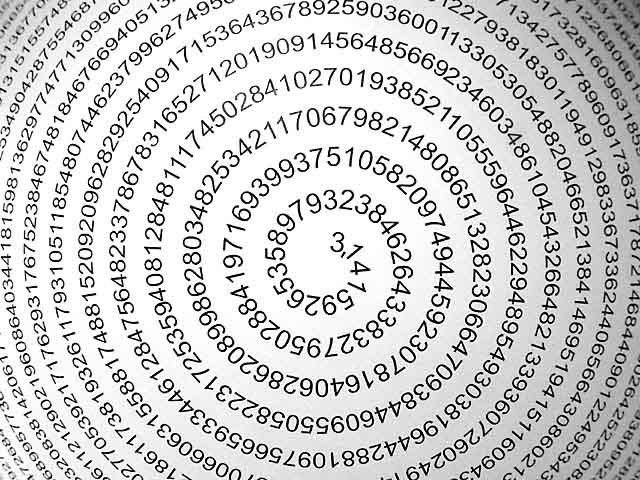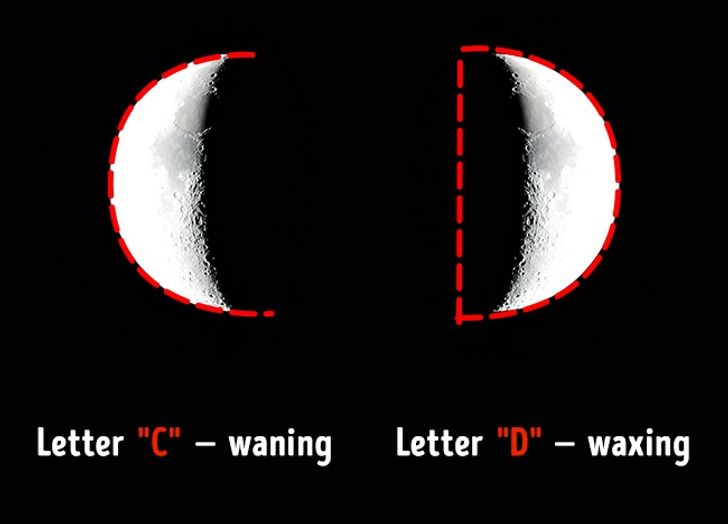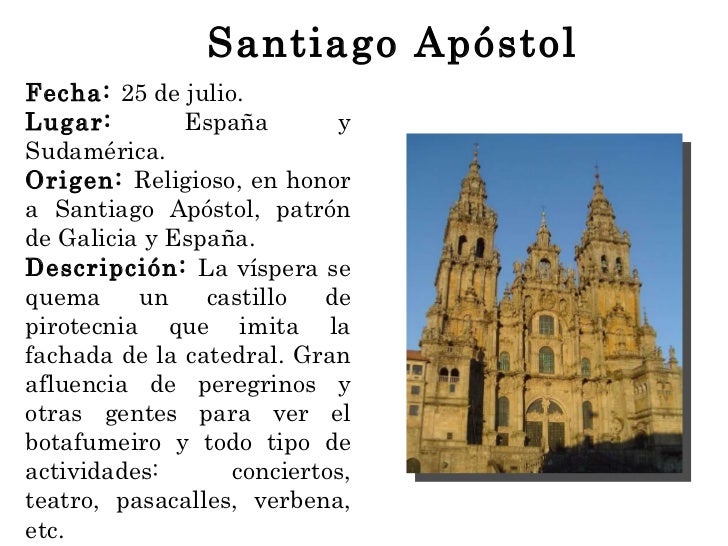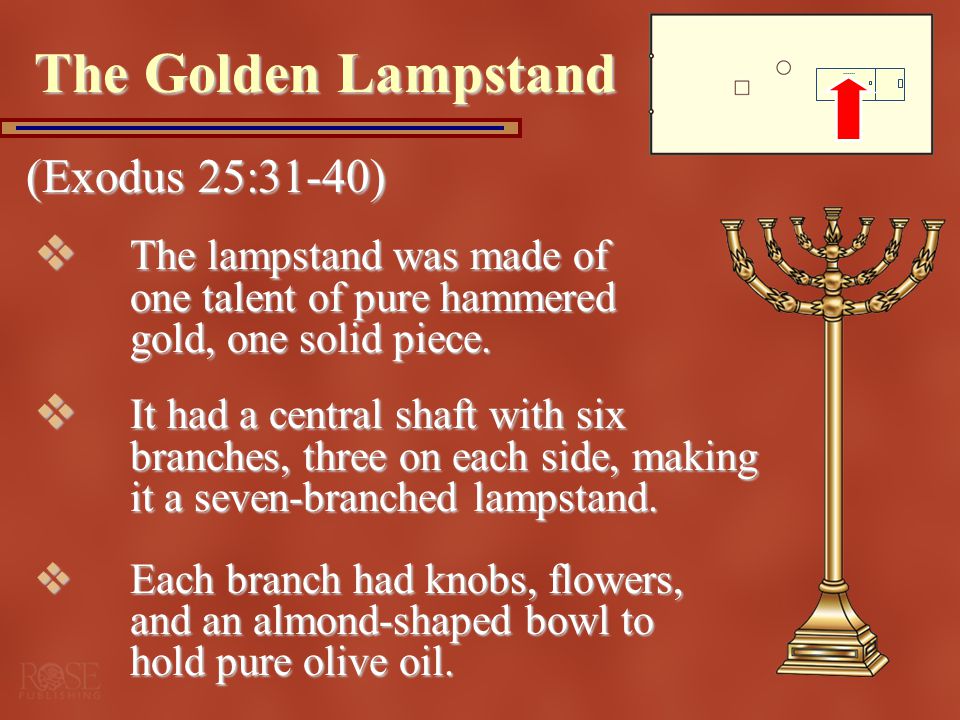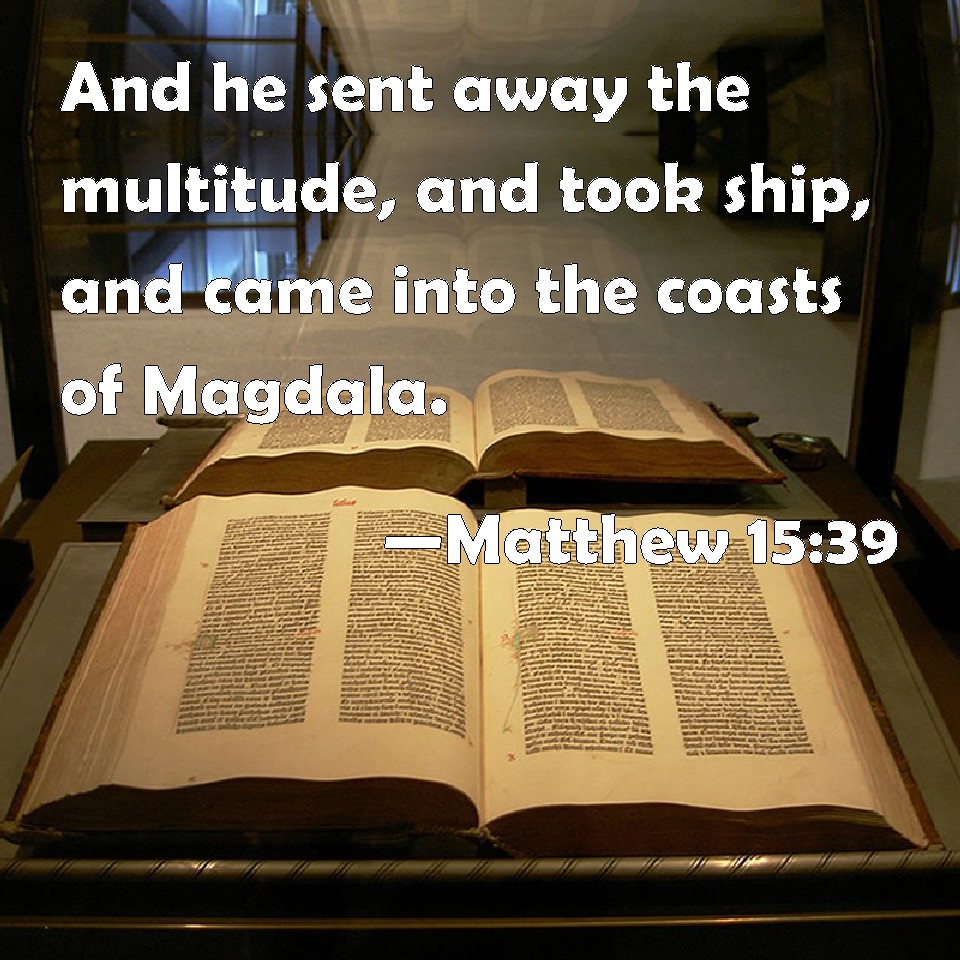|
|
General: EXPERIMENTO FILADELFIA=22 DE JULIO=DIA DE MARIA LA MAGDALENA
Elegir otro panel de mensajes |
|
|
Experimento Filadelfia
De Wikipedia, la enciclopedia libre
El Experimento Filadelfia, también llamado Proyecto Arcoíris, es el nombre que recibió un supuesto experimento secreto llevado a cabo por la marina estadounidense en los astilleros navales de Filadelfia, en el estado de Pensilvania, durante o antes del 28 de octubre de 1943. En el cual el destructor escolta de la Armada USS Eldridge al parecer fue invisibilizado (o "encubierto") electrónicamente contra los dispositivos enemigos. La marina de Estados Unidos comenta que ha buscado archivos que se refieran a este hecho y no los ha encontrado, ni ha encontrado evidencia de que se intentara.[cita requerida]
El incidente fue reportado repetidamente como una farsa.[1] [2] [3]
A finales de los años 30, el ingeniero eléctrico Nikola Tesla, afirmó[cita requerida] haber completado una teoría dinámica de la gravedad, que básicamente explica la gravedad como una mezcla de ondas electromagnéticas longitudinales y transversales. Estos razonamientos calaron hondo en un grupo de trabajo que experimentaba con los campos electromagnéticos en la Universidad de Chicago[cita requerida], donde se estaban iniciando las investigaciones sobre la posibilidad de la invisibilidad a través del uso de campos eléctricos y magnéticos. Este proyecto se habría trasladado en 1939 al Instituto de Estudios Avanzados de la Universidad de Princeton[cita requerida].
En un momento determinado, se afirmó haber conseguido la invisibilidad de pequeños objetos, con lo que se presentó al gobierno de los Estados Unidos.[cita requerida] Por lo que en el plano militar vieron el potencial de esta nueva tecnología y decidieron sufragar el curso de las investigaciones a fin de direccionarlas en el sentido que les convenía: su aplicación a la industria bélica. El USS Eldridge, es modificado para transportar toneladas de equipamiento electrónico, entre el que se incluirían dos enormes generadores de 75 kV cada uno, montados en el lugar que debería ocupar la torreta de cañones de proa, y que distribuían su potencia a través de cuatro bobinas montadas en cubierta. Tres transmisores RF de 2 megavatios cada uno, 3.000 tubos amplificadores 6L6 (empleados para canalizar los campos de las bobinas de los dos generadores), circuitos de sincronización y modulación... fueron empleados para generar campos electromagnéticos masivos que, correctamente configurados, serían capaces de curvar las ondas de luz y de radios alrededor del buque, haciéndolo invisible.
Las pruebas habrían empezado el verano de 1943, y hasta cierto punto tuvieron éxito al principio. Una prueba, el 22 de julio de 1943, volvió al USS Eldridge (DE-173) casi totalmente invisible, con algunos testigos reportando una "niebla verdosa" —sin embargo, algunos miembros de la tripulación se quejaron de náuseas posteriormente. En ese momento, el experimento fue alterado a petición de la Marina, con el objetivo de hacer al navío invisible a los radares únicamente.[cita requerida]
El equipo fue recalibrado y el experimento se llevó a cabo el 28 de octubre. Esta vez, el Eldridge no sólo se volvió totalmente invisible a la vista, sino que de hecho desapareció del área en un relámpago azul. Al mismo tiempo, la base naval estadounidense en Norfolk, Virginia, a 600 km de distancia, un tripulante en sus costas declaró haber visto al Eldridge durante 15 minutos, al final de los cuales desapareció, para volver a aparecer en Filadelfia, en sus coordenadas originales —supuestamente un caso accidental de teletransportación.[cita requerida]
Según el relato de Carlos Allende[cita requerida], los efectos fisiológicos en la tripulación fueron profundos. Mareos muy violentos, personal que desapareció por completo, otros que simplemente se volvieron locos o padecieron esquizofrenia severa, y lo más terrorífico fue el hallazgo de cinco miembros de la tripulación fundidos completamente con la estructura de metal de la proa del buque y otros tantos sufrieron desmaterializaciones de algunas partes de sus cuerpos. Supuestamente, los oficiales navales horrorizados cancelaron el experimento inmediatamente. Los supervivientes nunca fueron los mismos, y permanecieron en una suerte de amnesia total.[cita requerida]
Publicación de la historia[editar]
Los detalles de este experimento fueron revelados indirectamente.
Carl Allen/Carlos Allende[editar]
En 1955, K. Jessup, un astrónomo amateur, antes investigador postuniversitario, publicó The Case for the UFO, un examen del fenómeno del OVNI (UFO en inglés) en el que teorizaba los medios de propulsión que un platillo volador del estilo de un OVNI podría utilizar. Jessup especuló que la anti-gravedad o el electromagnetismo pueden ser responsables del comportamiento de vuelo observado en los OVNIs, y lamentó, tanto en el libro como en la publicidad del tour que siguió, que la investigación de los vuelos espaciales se concentrara en el área de los cohetes, y que se pusiera poca atención a otros medios teóricos de vuelo, que él consideraba rendirían más frutos al final.
El 13 de enero de 1956, Jessup recibió una carta de un hombre que se identificaba como "Carlos Miguel Allende". En ella, Allende informaba a Jessup del Experimento Filadelfia, aludiendo a artículos periodísticos de la época de fuentes dudosas como "prueba". Allende también decía haber sido testigo de la desaparición y reaparición del Eldridge mientras trabajaba en un barco mercante que se encontraba cerca, el SS Andrew Furuseth. Incluso mencionó los nombres de otros tripulantes del Andrew Furuseth, y decía saber del destino de algunos miembros de la tripulación del Eldridge tras el experimento, incluyendo uno que dice haber visto "desaparecer" durante una pelea en un bar. Jessup le respondió a Allende con una postal, pidiendo más evidencia y corroboración de la historia, tales como fechas y detalles específicos de la misma. La respuesta llegó varios meses más tarde; sin embargo, esta vez el hombre se identificaba como "Carl M. Allen". Allen dijo que no podría proveer los detalles pedidos por Jessup, pero insinuaba que podrían ser obtenidos a través de la hipnosis. Jessup decidió cortar la correspondencia.
La ONR y las notas de Varo[editar]
En la primavera de 1957, Jessup fue contactado por la Oficina de Investigación Naval (Office of Naval Research, ONR) de Washington D.C., que le pedía estudiar el contenido de un paquete que habían recibido. Al llegar, el curioso Jessup quedó perplejo al encontrar que una copia de su libro había sido enviada a la ONR en un sobre manila con la leyenda "HAPPY EASTER" (felices pascuas). Además, el libro tenía numerosas notas al margen, y la oficina de la ONR le preguntó a Jessup si tenía idea de quién pudo haberlas hecho.
Las largas anotaciones estaban escritas en tres diferentes colores, y parecían detallar la correspondencia entre tres individuos, de los cuales solo uno tenía nombre: "Jemi". La ONR etiquetó a los otros dos como "Mr. A" y "Mr. B". Las notas se refieren a las otras personas y discuten dos tipos diferentes de "gente" que viven en el espacio. El uso de las mayúsculas y la puntuación era inusual, y detallaba largamente los méritos de varias suposiciones que Jessup hacía en el libro, con referencias oblicuas al Experimento Filadelfia, en una forma que sugería conocimiento previo o superior (por ejemplo, "Mr. B" asegura sobre una teoría de Jessup que "No sabe, no puede saber. sólo adivina").
Basado en el estilo de la escritura y el tema y comparando con las cartas que había recibido previamente, Jessup identificó a "Mr. A" como Carlos Allende/Carl Allen. Otros han sugerido que todas las anotaciones las hizo la misma persona, usando tres plumas diferentes.
La ONR contactó después a Jessup, diciendo que la dirección de la carta de Allende era una casa de campo abandonada. También le informaron a Jessup que la corporación Varo, una firma de investigación, estaba preparando una impresión de The Case for the UFO con las dos cartas y las notas. Al parecer, se imprimieron alrededor de 100 copias, incluyendo tres enviadas a Jessup.
Jessup trató de sacar provecho del tema, pero su siguiente libro se vendió mal y su editor rechazó algunos escritos más. En 1958 lo dejó su esposa, y sus amigos lo describieron como inestable cuando viajó a Nueva York. Tras su regreso a Florida estuvo envuelto en un accidente automovilístico severo y tardó en recuperarse, aumentando su desánimo. Morris Jessup se suicidó en 1959, (envenenado por los gases de escape de su vehículo).
La misteriosa muerte de Jessup[editar]
La muerte de Jessup ha sido tema de muchas especulaciones. Algunos amigos suyos dijeron que Jessup no era el tipo de persona que se suicida. Otros han sugerido que fue asesinado porque se negó a dejar las investigaciones sobre el enigma de los OVNIS. Sin embargo, otros amigos dijeron que Jessup estaba deprimido a causa de problemas personales, y que había anunciado su suicidio a un intimo amigo suyo.
Biografía de Carl Allen[editar]
Carl Allen fue un enigma viviente. El verdadero nombre de Carl Allen era Carl Meredith Allen, quien cambió varias veces de nombre y domicilio. Nació en Springdale (Pensilvania) en mayo de 1925, y se le suponen por lo menos cinco seudónimos. Es el menor de tres hijos; su padre era irlandés y su madre gitana. Se alistó en la Marina de los Estados Unidos el 14 de julio de 1942, y se licenció el 21 de mayo de 1943. En julio de 1943 entró en la marina mercante, que abandonó en octubre de 1952, y desde entonces fue una especie de vagabundo. Se dice que visitó la corporación Varo por invitación de su presidente, y que estuvo en contacto con el doctor Edward U. Condon durante la investigación de OVNIS que realizó en la Universidad de Colorado. Allen reconoció ser el autor de las cartas de Jessup y de las anotaciones que había en el libro enviado a la ONR. Se supone que negó que se tratara de una simple broma. Murió en un asilo de Colorado el 5 de marzo de 1994.
Las cartas de Carlos Allende[editar]
La historia del Experimento Filadelfia se basa, sobre todo, en la información contenida en dos cartas enviadas en 1956 por Carlos Allende (Carl Allen) a Morris Jessup. En la traducción no se han mantenido las faltas de ortografía del original, pero se ha intentado preservar el sorprendente "tono" de Allende.
Estimado doctor Jessup: Su invocación al público para que se mueva en masa sobre sus representantes y haya así suficiente presión colocada en un correcto y suficiente número de lugares donde pueda ser aprobada una ley para que la Teoría del campo unificado del doctor Albert Einstein (1925-27) sea puesta en práctica no es nada necesaria.
Se usaron los "resultados" de mi amigo Dr. Franklin Reno... Los resultados fueron y son hoy prueba de que la Teoría del Campo Unificado hasta cierto punto es correcta... El "resultado" fue la completa invisibilidad de un barco, tipo destructor, y toda su tripulación. Estaba navegando. (Oct. 1943). El Campo fue efectivo en una forma esferoidal oblata que se extendía cien yardas (más o menos, debido a la posición lunar y latitud) fuera de cada lado del barco. Cualquier persona dentro de esa esfera se volvía de forma vaga pero él también observó a esas personas a bordo de ese barco como si ellas también estuvieran en el mismo estado y sin embargo estuvieran andando sobre nada. Cualquier persona fuera de esa esfera no podía ver nada, salvo la forma claramente definida del casco del barco en el agua...
Quedan muy pocos de la tripulación experimental original ahora, Señor. La mayoría enloqueció, uno salió a través de la pared de su alojamiento a la vista de su mujer e hijo y otros 2 miembros de la tripulación (no volvió a ser visto), dos "se fueron al Fuego" o sea se inmovilizaron y se incendiaron mientras llevaban unas brújulas comunes... (ardieron 18 días)... El experimento fue un éxito completo. Los hombres fueron fracasos completos.
Revise periódicos de Filadelfia buscando un parrafito (parte superior de la hoja, interior del periódico cerca del tercio final del periódico, 1944-46 en primavera u otoño o invierno, no en verano) de una noticia describiendo las acciones de los marineros después de su viaje inicial. Asaltaron un local en el astillero de la Marina "Gin Mill" o "Beer Joint" y causaron tanta conmoción y parálisis de las camareras que poco de comprensible se les pudo sacar, que el párrafo y el que lo escribió no lo cree, y dice "Sólo escribí lo que oí y esas mujeres están locas...".
Le pido que haga éste poco de investigación sólo para que se trague la lengua cuando recuerde lo que "pidió que se haga ley".
Muy irrespetuosamente suyo, Carl M. Allen
P.S. Ayudaré más si usted ve que puedo. (Z416175)
- Segunda carta (Días después)
Notas de adición y pertenecientes a la misiva:
Quiero mencionar que de algún modo también el Barco Experimental desapareció del muelle de Filadelfia y muy pocos minutos después apareció en otro muelle en Norfolk, Newport News, en la zona de Portsmouth. Éste fue señalado y claramente identificado como el lugar pero entonces el barco, de nuevo desapareció y volvió a su muelle de Filadelfia en sólo unos pocos minutos o menos. Esto también fue notado en los periódicos. Pero he olvidado en qué periódico lo leí o cuándo pasó. Probablemente al final de los experimentos. Podría haber sido en 1956, después de que terminaran los experimentos, no lo puedo decir con seguridad.
Muy sinceramente,
Carl M. Allen
Estimado señor Jessup:
Me pide lo que es equivalente a pruebas positivas de algo que sólo la duplicación de los dispositivos que produjeron "este fenómeno" podrían darle... Nunca podré satisfacer esa actitud... Puedo ser de alguna ayuda positiva para usted en mí mismo pero para hacerlo requeriría un Hipnotizador, Pentotal Sódico, un grabador y una excelente dactilógrafa para producir material de valor para usted...
Soy un contemplador de las estrellas Sr. Jessup. No lo disimulo y el hecho de que... estoy seguro de que el hombre irá adonde ahora sueña con estar... hacia las estrellas vía la forma de transporte con que tropezó accidentalmente la Marina (para consternación suya) cuando su barco exp. despegó y apareció un minuto después más o menos a varios cientos de millas marinas de distancias... Quizás la Marina ya haya usado este accidente de transporte para construir sus OVNIS. Eso es un avance desde todos los puntos de vista. ¿A usted qué le parece?
Muy respetuosamente, Carl Allen.
Curiosidades[editar]
- Al barco lo rodeaba una niebla verde, y esto es lo que sucede en la mayoría de los casos reportados en el Triángulo de las Bermudas[cita requerida].
- Los tripulantes viajaron en octubre de 1943 en los 15 minutos que duro la invisibilidad desde el muelle de Filadelfia a otro muelle en Norfolk, Newport News, en la zona de Portsmouth.
- Según la leyenda, se afirma que se produjo una pelea en un bar donde los tripulantes supervivientes comenzaron a materializarse y desmaterializarse.
Referencias[editar]
Referencias literarias[editar]
- (Charles Berlitz) "Triángulo de las Bermudas" En este libro aparte de relatar los hechos del misterio también hace referencia al experimento
- Charles Berlitz; "The Philadelphia Experiment - Projecto Invisibility" (1979)
- Thin Air (Aire delgado) George E. Simpson Trata sobre el tema, desde una investigación de personas tratadas psicológicamente, debido al trauma subsiguiente al supuesto experimento.-
Referencias filmográficas[editar]
Véase también[editar]
http://es.wikipedia.org/wiki/Experimento_Filadelfia
|
|
|
|
|
Los templarios y el culto a las Vírgenes Negras (II). San Bernardo y María Magdalena

Isis con Horus niño
La influencia que tuvo S. Bernardo en la Orden es indiscutible y los caballeros templarios heredaron los antiguos ritos de la Francia septentrional que evolucionaron gracias al santo considerado como el último de los druidas. Tras la derrota en S. Juan de Acre en 1291 se pierde Tierra Santa y son obligados a marcharse todos los cristianos; es entonces cuando la Orden del Temple se refugia en Chipre, donde tenían muchas posesiones. La Casa de María en Nazaret, la «Santa Casa», fue piedra a piedra desmontada y trasladada en los barcos templarios a Italia. La supresión del Temple supuso la diáspora de los caballeros; algunos ingresaron en otras ordenes y otros fueron encarcelados y condenados a cadena perpetua por los inquisidores. ¿Qué papel juega María Magdalena en la orden? Para muchos autores María Magdalena era «Nuestra Señora» de la casa de Betania, de modo que cuando se utiliza la advocación a Nuestra Señora se están refiriendo a ella y no a la Virgen María como la iglesia católica se empeña en proclamar; de hecho en todas las catedrales e iglesias del Temple, María Magdalena ocupa un lugar destacado. Por otra parte, cuando S. Bernardo hace el llamamiento para la segunda cruzada desde la iglesia de Santa María Magdalena en Vézelay, lo hace en unos términos que parece que está reclamando las tierras de la estirpe sagrada de María Magdalena. A todo ello se añade el hecho de que los restos mortales de la santa, descubiertos en 1279 por Carlos II de Anjou, se hallaban custodiados en la cripta de Saint Maximin. Por todo ello muchos autores afirman que María Magdalena sería en realidad la esposa de Jesucristo y habría que preservar su estirpe real. Volviendo a los templarios, parece ser que estos descubren en las caballerizas del Templo de Salomón algo que solo comunican al papa Honorio II, al Patriarca de Jerusalén y a S. Bernardo de Claraval. Este hecho o la información que poseía S. Bernardo conduce a los caballeros hasta Egipto y más concretamente al templo de la diosa egipcia Isis en la isla de Philae. (continuará)
https://laestirgaburlona.com/2018/03/19/los-templarios-y-el-culto-a-las-virgenes-negras-ii-san-bernardo-y-maria-magdalena/ |
|
|
|
|
DREAMS=D-REAMS=LETTER D

|
|
|
|
|
|
|
|
HOLY EQUAL-TO-THE-APOSTLES MARY MAGDALENE
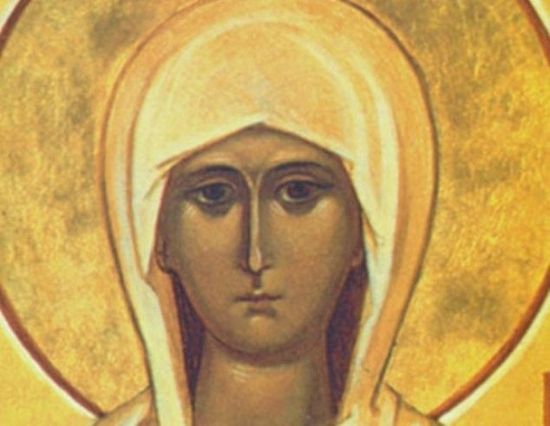
Through His sufferings Christ the Savior redeemed mankind, and opened the gate to the Kingdom of Heaven. During His service he continually preached to all that they follow Him. Those who heard God’s words received them in differing ways, but there were those among them who brought forth fruit in abundance (cf. Mt. 13:8). One of these was the holy equal-to-the-apostles Mary Magdalene. She received that name from the place where she lived, in the town of Magdala. This town belonged to the tribe of Issachar and was located on the western shore of the Sea of Tiberius in Galilee, not far from Capernaum. The naming of a woman for her place of residence shows that she was well-off, because other women’s names were taken, for example, from their family relations: Mary the mother of Jacob, Maria the mother of Cleopas. Luke the Evangelist says that Christ preached the Kingdom of Heaven, and then after Him followed certain women, which had been healed of evil spirits and infirmities, Mary called Magdalene, out of whom went seven devils… and many others, which ministered unto him of their substance (Lk. 8:1–3).
We find the most about Mary Magdalene in the Gospel in passages where the sufferings of Christ the Savior are described, when she showed her dedication and faithfulness to her divine Teacher: Now there stood by the cross of Jesus his mother, and his mother’s sister, Mary the wife of Cleophas, and Mary Magdalene (Jn. 19:25). After the death of the divine Sufferer on the Cross, the centurion on watch believed in the divinity of Christ the Savior. The Evangelist Matthew adds, And many women were there beholding afar off, which followed Jesus from Galilee, ministering unto him: Among which was Mary Magdalene, and Mary the mother of James and Joses, and the mother of Zebedees children (Mt. 27:55–56). Then righteous Joseph of Arimathea asked for the body of the divine Sufferer and buried Him in his own new tomb (Mt. 27–60). As the Evangelist Matthew notes, And there was Mary Magdalene, and the other Mary, sitting over against the sepulcher (Mt. 27:61). The Evangelist Mark says, Mary Magdalene and Mary the mother of Joses beheld where he was laid (Mk. 15:47). Then, when the sabbath was past, Mary Magdalene, and Mary the mother of James, and Salome, had bought sweet spices, that they might come and anoint him (Mk. 16:1). Their worries about the sealed tomb were put to rest all by themselves, when they looked, they saw that the stone was rolled away (Mk. 16:4) and they saw in the tomb a bright angel, who told them the news about the Risen Lord Christ. Then after His resurrection, He appeared first to Mary Magdalene, out of whom he had cast seven devils. And she went and told them that had been with him, as they mourned and wept (Mk. 16:9–10). The Evangelist John the Theologian speaks a little differently and in more detail about the events of those sorrowful days, which would soon become joyful. Mary Magdalene came early, when it was yet dark, unto the sepulchre, and seeth the stone taken away from the sepulcher (Jn. 20:1). She hastened to tell the apostles Peter and John about it, and they in turn hastened to the tomb where they saw the linen clothes lying (Jn. 20:5). Then they returned, but Mary stood without at the sepulchre weeping: and as she wept, she stooped down, and looked into the sepulchre, And seeth two angels in white sitting, the one at the head, and the other at the feet, where the body of Jesus had lain. And they say unto her, Woman, why weepest thou? She saith unto them, Because they have taken away my Lord, and I know not where they have laid him. And when she had thus said, she turned herself back, and saw Jesus standing, and knew not that it was Jesus. Jesus saith unto her, Woman, why weepest thou? whom seekest thou? She, supposing him to be the gardener, saith unto him, Sir, if thou have borne him hence, tell me where thou hast laid him, and I will take him away. Jesus saith unto her, Mary. She turned herself, and saith unto him, Rabboni; which is to say, Master. Jesus saith unto her, Touch me not; for I am not yet ascended to my Father: but go to my brethren, and say unto them, I ascend unto my Father, and your Father; and to my God, and your God. Mary Magdalene came and told the disciples that she had seen the Lord, and that he had spoken these things unto her (Jn. 20:11–18). In the service of the Sunday of the Holy Myrrhbearing Women [the second Sunday after Pascha] we read: “Having come to the tomb seeking the Lord, Mary Magdalene and the other Mary, saw the angel like lightning sitting on the stone, who said to them, ‘Why seek ye the Living among the dead? He has risen as he said. You will find Him in Galilee.”[1]
After the Ascension of the Lord, Mary Magdalene undoubtedly was among certain women (Acts 1:14), who abided in one spirit in prayer with the holy apostles and the Mother of God in the upper room, awaiting the descent of the Holy Spirit. A later traveller describes this place in the holy city of Jerusalem. In the church of Sts. Constantine and Helen, “we were brought … where Christ sat on the stone when He appeared to Maria Magdalene… And the stone, which was the chair, was round, of red rock.”[2] In the church of the Resurrection of Christ “is the stone upon which Christ sat and appeared to Maria Magdalene.”[3]
Church tradition has preserved testimony to her exploits in the capital of the empire. “In Rome, having appeared to the Emperor Tiberius, St. Mary Magdalene brought him a red egg with the words, ‘Christ is Risen!’ Then she told the emperor about the Savior’s sufferings on the Cross. In those days, the presentation of an egg was a sign of joy. From the time of St. Mary Magdalene the trading of eggs on the day of the Resurrection of the Lord amongst Christians became a custom.”[4] This is mentioned in the akathist to the holy Myrrhbearer. In the eleventh ikos we read: “Having reached ancient Rome, courageously didst thou appear before Tiberius Caesar, and with the image of a red egg and wise words thou didst expound to him the life-bearing power of Christ, rebuked deceitful Pilate and the godless high priest, that they will be justly repaid for their lawless deeds… Rejoice, thou who didst not fear Caesar’s wrath; rejoice, thou who didst show him the evil and cunning of Christ’s enemies.”[5] The Church historian Eusebius Pamphilus says that the Roman Emperor Tiberius (14–37) knew from Pilate of the events in Palestine, of the talk about the resurrection of Christ the Savior, “and did not find anything preposterous in Christ’s teachings.”[6] Moreover it is supposed that thanks to Mary Magdalene’s preaching the Roman ruler proposed to the senate that they “include Christ in the pantheon of Roman gods.”[7] The holy Myrrhbearer knew the apostle Paul, whom the Lord had called to preach the Gospel only after His glorious Resurrection, and apparently helped him in his missionary service. Therefore the apostle Paul at the end of his epistle to the Romans writes, Greet Mary, who bestowed much labour on us (Rom. 16:6).
Later Mary Magdalene came to Ephesus, where St. John the Theologian who, as opposed to the other Evangelists, wrote the fourth Gospel significantly later; in it is spoken in detail about the resurrection of Christ the Savior and His appearance to Mary Magdalene. Mary Magdalene reposed in the Lord in Ephesus. St. Dimitry of Rostov (†1709; commemorated October 28), says that she “was laid to rest at the entrance to the cave in which the seven youths of Ephesus would later fall asleep.”[8] In examining the Western version of St. Mary Magdalene’s relics in Provence, Archbishop Sergius (Spassky) notes that “according to the Life of St. Willibald (comm. July 7), bishop of Eichstadt, who travelled to the East in the eighth century, her grave was shown in 745 in Ephesus.”[9] Later her holy relics were translated to Constantinople during the reign of Emperor Leo VI the Philosopher (886–912).[10] Meanwhile Igumen Daniel, who travelled from Kievan Rus’ to the Holy Land at the beginning of the eleventh century, during the heat of the crusades, visited also Ephesus. He wrote, “And here, near that cave where the seven sleeping youths of Ephesus lie, are … also the grave of Magdalene Mary and her head.”[11] And an anonymous Russian traveller who visited Constantinople in the late thirteenth century–early fourth century, that is, after the fall of the Latin empire, describes the holy site in the capital city monastery of Righteous Lazarus: “St. Lazarus the friend of God is sealed in the right column, and his sister Martha lies at his left hand; here … in the left column Mary Magdalene is enclosed.”[12] Later travellers who visited this monastery say nothing about the relics of St. Mary Magdalene.[13]
<…>
The fate of the holy Myrrhbearer’s relics is interesting. Apparently, “during the crusades they were taken to Rome and placed under the altar of the Lateran Cathedral. A part of the relics of St. Mary Magdalene are in France, near Marseille. Particles of her holy relics are preserved in the monasteries of Mt. Athos and Jerusalem.”[14] Many relics of ancient saints, as a consequence of the shameful Fourth Crusade—when in 1204 Constantinople was seized and plundered—ended up in the West. Behind this is the peculiar piety of the Western crusaders. It is worth noting that before and after there were also cases when due to various circumstances the relics of various saints ended up in the West; for example, those of St. Nicholas. An unknown traveller from Suzdal, who went with Metropolitan Isidore in 1438 from Moscow to Italy to the Uniate Council, says of the holy shrines of Venice: “There St. Marko himself lies; and there are many relics of saints, taken from Tsargrad [Constantinople].”[15] Now, centuries later, we can see a special providence in this, because the saints’ relics would have perished from the Turks at the fall of Byzantium.:[16] But during following years the Western Church itself experienced a schism—Protestantism arose, which rejects the veneration of holy relics and icons. Incidentally, the veneration of specific saints in different regions has been preserved and bears a particularly solemn character; for example, in the southern Italian city of Bari they solemnly honor St. Nicholas on May 9: Wearing costumes from the ninth century they carry an ancient sculpture of him through the town, and so forth. In “The Travels of Avraamy of Suzdal to the eighth council with Metropolitan Isidore”, a mystery play is described that was enacted in the Ascension Church of Florence on the very feast of the Ascension. The Mother of God and St. Mary Magdalene were the only female persons named in the play.
Bishop Sergius (Spassky) notes the opinion in Western patristic historiography that equates Mary Magdalene with the sinful woman who washed the feet of Jesus Christ in the house of Simon the Pharisee (Lk. 7:38), as well as the identification of Mary Magdalene with Mary the sister of righteous Lazarus. The Eastern fathers differentiate between them.[17] This is quite an important differentiation in the veneration of the holy Myrrhbearers, because behind it is a different understanding of her life’s path and podvig. Western tradition considers that equal-to-the-apostles Mary Magdalene, after her preaching in Rome, labored in the south of France and Provence, and along with her righteous Martha, Lazarus, and St. Maximinus preached the Gospel. Therefore St. Mary Magdalene is honored as the enlightener of Marseille, who converted its inhabitants to Christianity. The cave, which is preserved in the area of La Sainte Baume, where the holy Myrrhbearer spent time in solitude, later became a place of pious pilgrimage and worship.[18]
In the church of the holy equal-to-the-apostles Mary Magdalene in Saint Maximinus, in the center of the northern part of the basilica there is an entrance to the crypt where the relics of Christ’s disciple were uncovered in 1279.[19] It was discovered that from out of the righteous woman’s mouth a plant was sprouting. Theological thought explained this as a testimony to her special mission: She was an “Apostle to the Apostles”, because it was she who announced the glad tidings of the Resurrection of Christ the Savior to the Apostles.[20] The initiator of the uncovering of the holy relics of Christ’s disciple was Prince Charles of Anjou († 1309), the heir to the duke of Provence. From that time on, Mary Magdalene became the protectress of the Anjou dynasty and of Provence, and her veneration took on a particular, imperial character.[21] A basilica was built over her relics. Here the holy Myrrhbearer is especially honored, and on July 22 according to the Gregorian calendar there are solemnities in the city.
It is important to note the opinion of one Western researcher who “came to the conclusion that the cult of Mary Magdalene arose in Provence no earlier than the mid-eleventh century,”[22] and services to her began in the West “only in the eleventh or twelfth centuries.”[23] They began to write Lives of the holy equal-to-the-apostles Mary Magdalene afterwards: the heremetic edition, the apostolic edition, and then both editions were combined into one. Later her Life was entered into Western hagiographic and homiletic compilations. The co-ascetics and continuers of the labors of St. John Cassian the Roman (†435; comm. February 29) aided in the spread of St. Mary Magdalene’s veneration in Europe.[24]
Because in the West the myrrhbearer was equated with the sinful woman who washed the feet of the Savior with her tears (Lk. 7:38), and the seven devils that tormented her were considered to be “retribution for her sins”,[25] the sermons of the Western clergy glorified St. Mary Magdalene as an example of true repentance.[26] The Eastern tradition, however, considers that these were two different women and that the works of God (Jn. 9:3) were made manifest on her. “Mary Magdalene was possessed by demons not due to her sins or the sins of her parents, but rather it was allowed by God’s Providence in order that the Lord Jesus Christ might show the works of God’s glory, and manifest the great miracle of the healing of Mary Magdalene, the enlightenment of her mind, drawing her to faith in Christ the Savior and to eternal salvation.”[27] Her veneration in the West was multi-faceted. Mary Magdalene’s care for Christ inspired the faithful to good deeds in her name.” Therefore in the Middle Ages guesthouses for travellers appeared that were “under the patronage of St. Mary Magdalene,[28] as well as hospitals and leper colonies. Monasteries were founded in her name, and in fact “monasteries named for St. Mary Magdalene were only outnumbered by those named after the Virgin Mary, which testifies to the great veneration for this saint.”[29] She is also the patron saint of craftsmen of various specializations.[30]
<...>
During life of her Divine Teacher she stood out for her faithfulness and dedication to Him. The later translation of her relics enabled the spread of her veneration in the world. Now, prayers are raised up to her in various countries and Churches. Her name and labors witness to the resurrection Christ the Savior. <...> One preacher said of her: “What a magnificent image of grateful love for the Lord is the holy equal-to-the-apostles Mary Magdalene! And thou, O Christian soul, should like her be penetrated with the same strong and unchanging feeling for the Lord Jesus. By His redeeming service you also are freed in the Sacrament of Baptism, like Magdalene, from the power of the evil, cunning spirits that have nested in you and have had access to people since the time of our forefather’s sin.”[31]
https://orthochristian.com/122857.html |
|
|
|
|
Una nueva invitada internacional acaba de confirmar su presencia en la décima edición y aniversario de Cinefan Festival. Por primera vez en la historia del evento asistirá un intérprete de la conocida saga “Regreso al futuro”. La actriz Claudia Wells, que interpretó a la novia de Marty Mcfly, Jennifer Parker, en el primer largometraje de la trilogía, representará en Úbeda a un clásico del cine fantástico y de ciencia ficción. Era un empeño de la organización que la saga tuviera presencia en el evento, desde hace varios años. Ojalá sea la primera de muchos de los que se esperan que pasen por su alfombra roja en las próximas ediciones.
Actriz norteamericana nacida en Kuala Lumpur (Malasia) y criada en San Francisco, California (EEUU), comenzó su carrera artística siendo adolescente, participando en diversas series de televisión como Herbie, The Love Bug (1982), Fama (1984) o Simon & Simon (1985). A pesar de que su carrera interpretativa parecía estar encaminada hacia el éxito, decidió apartarse de los platós cuando a su madre le fue diagnosticado un cáncer; esa trágica experiencia le impulsó a tomar un papel activo en organizaciones benéficas. En 2008 retoma la interpretación con Still Waters Burn, a la que siguen El mentalista (2011), Starship: Rising (2014), EP/Executive Protection (2015) o Vitals (2017), entre otros muchos títulos. A pesar de todo su bagaje artístico, para los fans siempre será recordada como la genuina Jennifer Parker, en la primera entrega de la trilogía de “Regreso al Futuro” (1985).
Claudia Wells se une a los actores ya anunciados del apartado internacional: John Simpkin, Peter Ross-Murray y Sarah Douglas. Los veremos en los encuentros y charlas del festival y en las sesiones de firmas entre el 22 y el 24 de julio. Aún quedan más comunicaciones de invitados internacionales y nacionales. ¡Esperar y ver!
http://cinefanfestivalubeda.blogspot.com/2022/06/regreso-al-futuro-desembarca-en-la.html |
|
|
 Primer Primer
 Anterior
654 a 668 de 668
Siguiente Anterior
654 a 668 de 668
Siguiente
 Último
Último

|
|
| |
|
|
©2025 - Gabitos - Todos los derechos reservados | |
|
|



